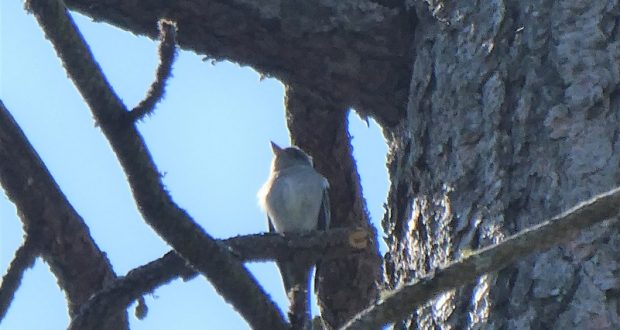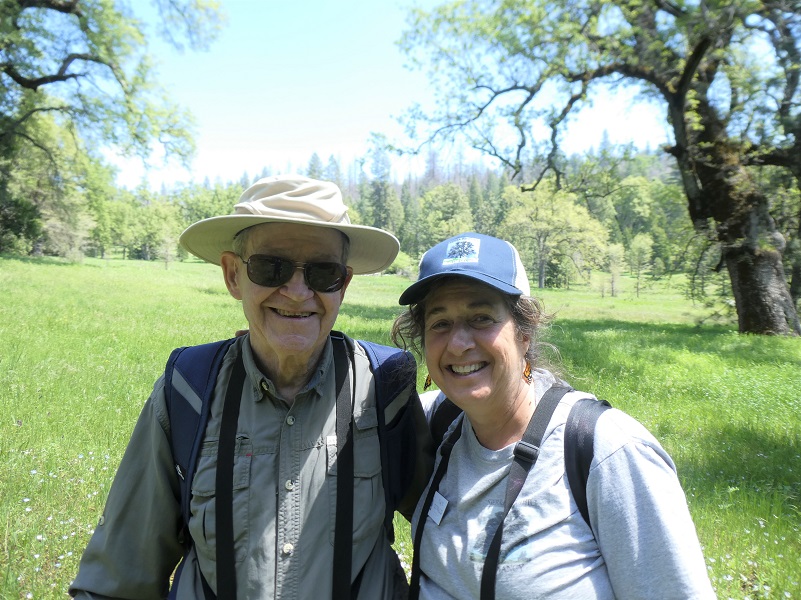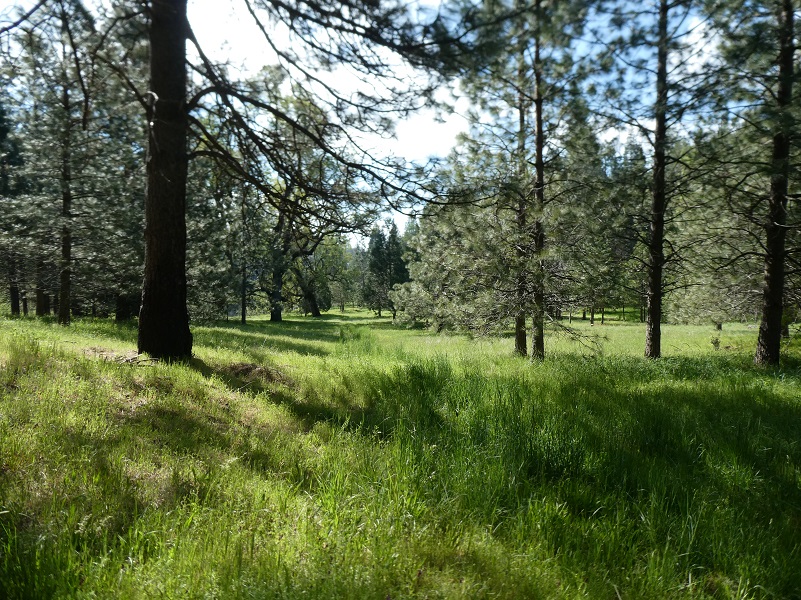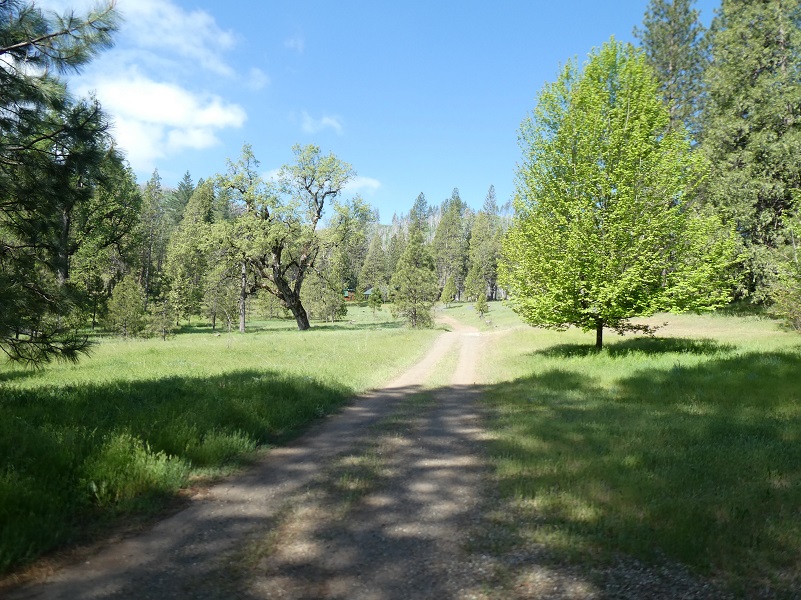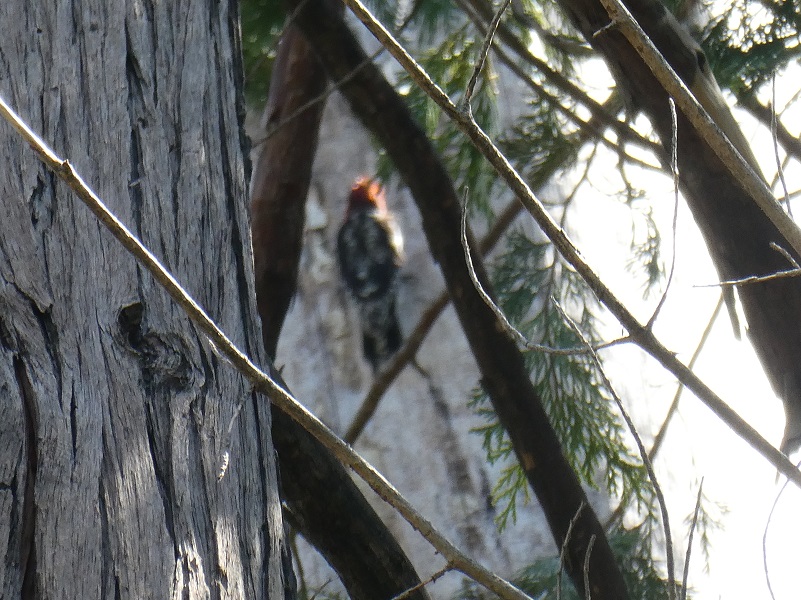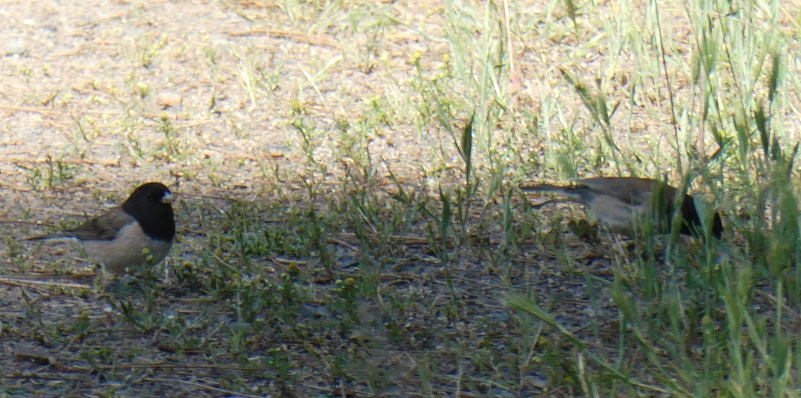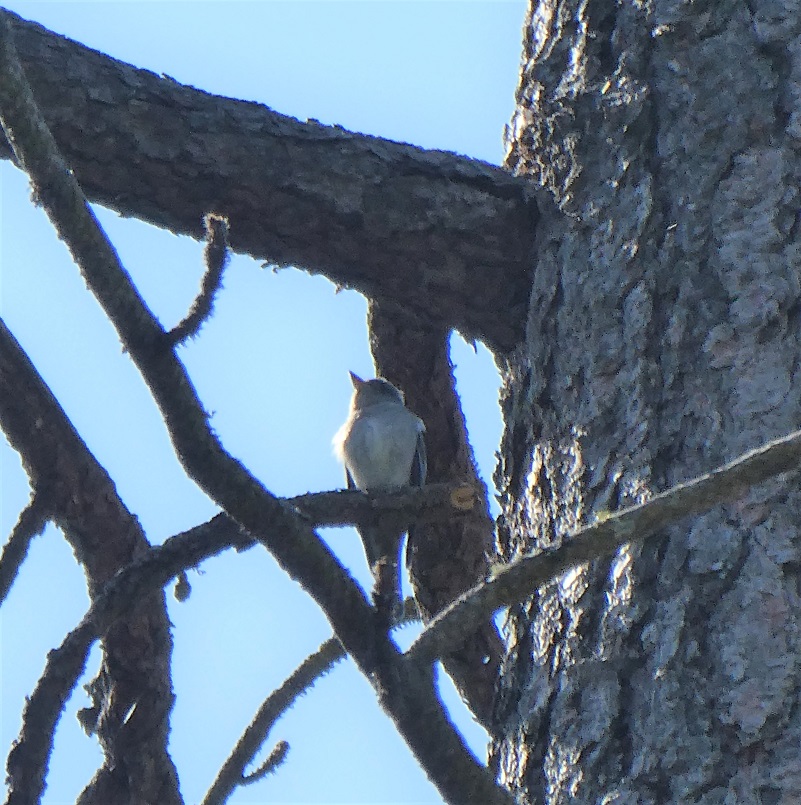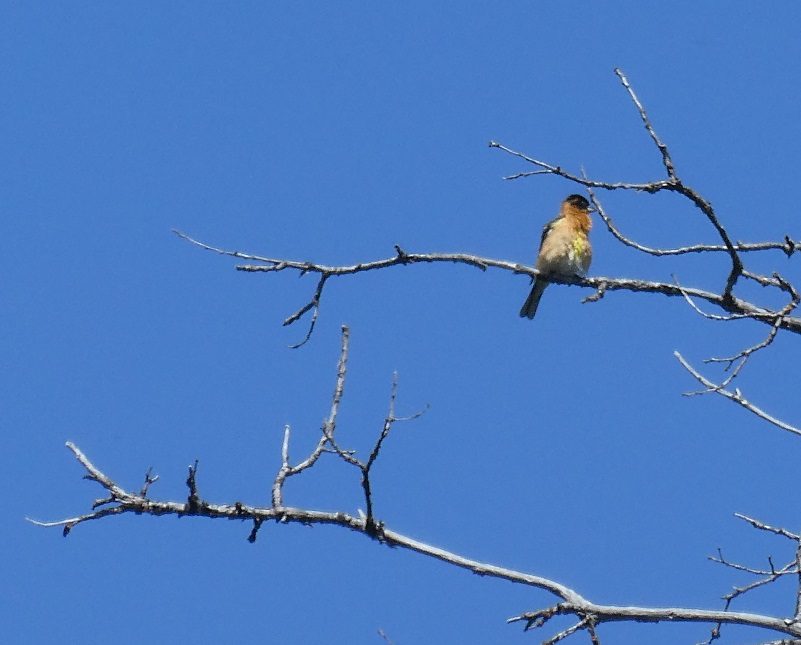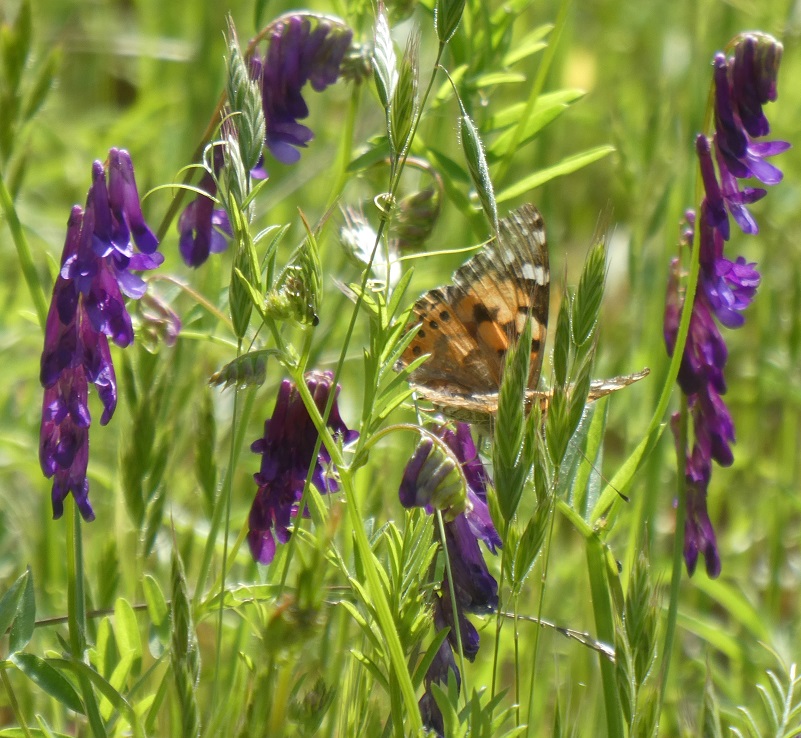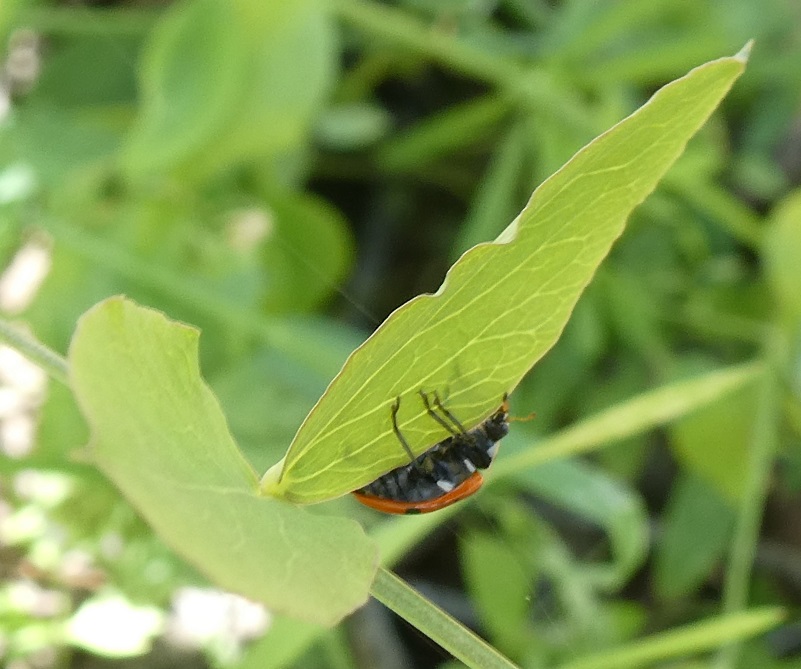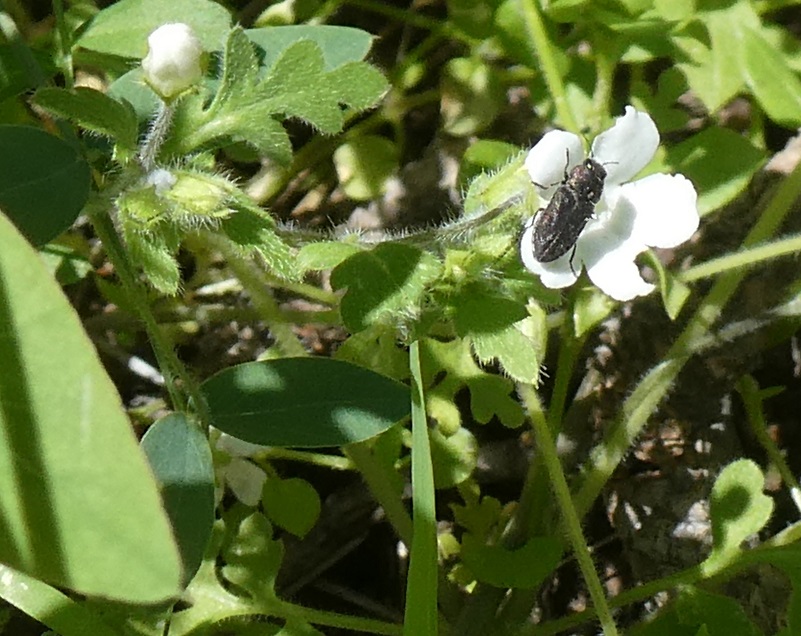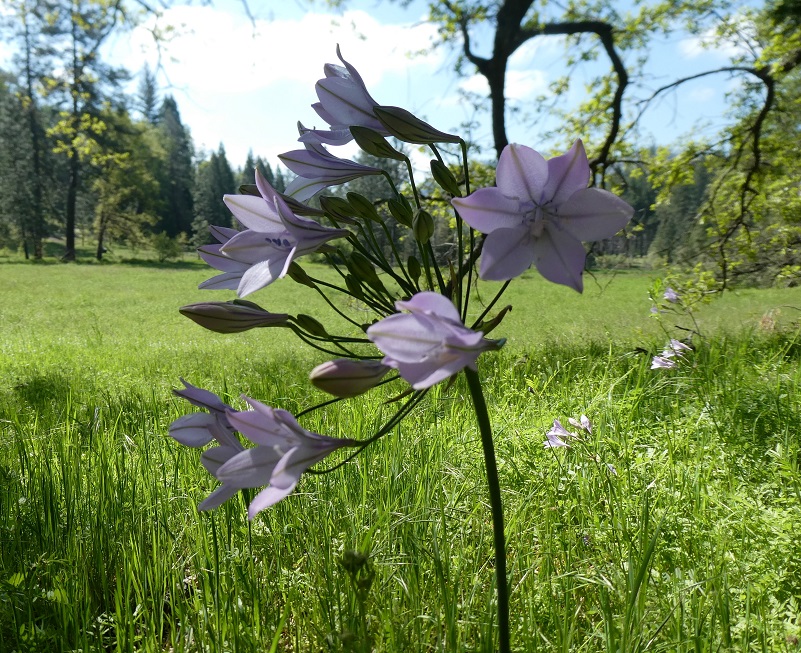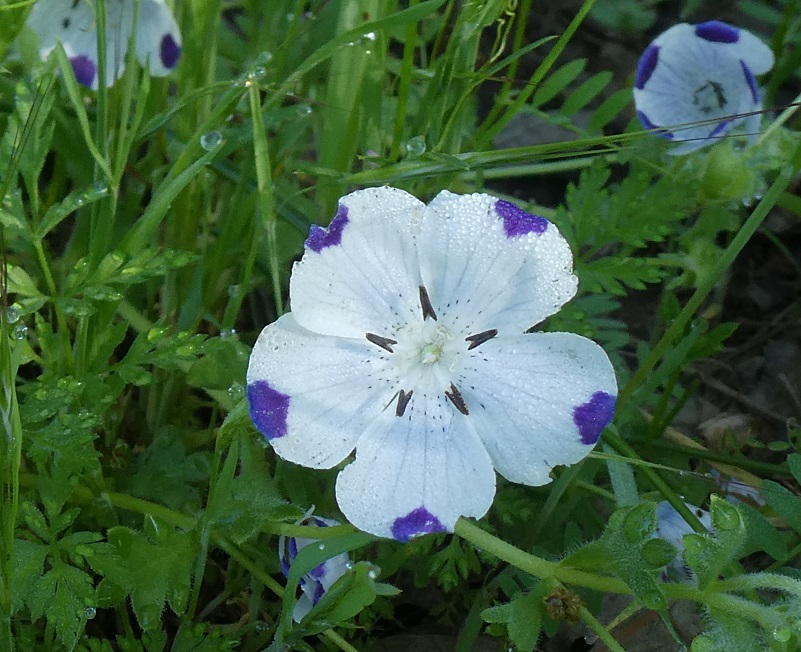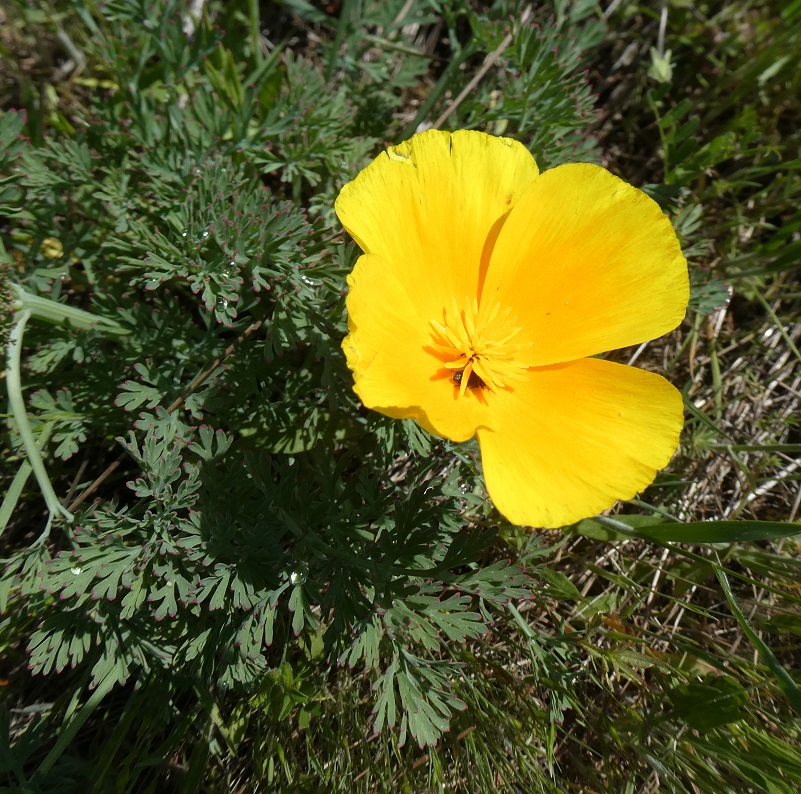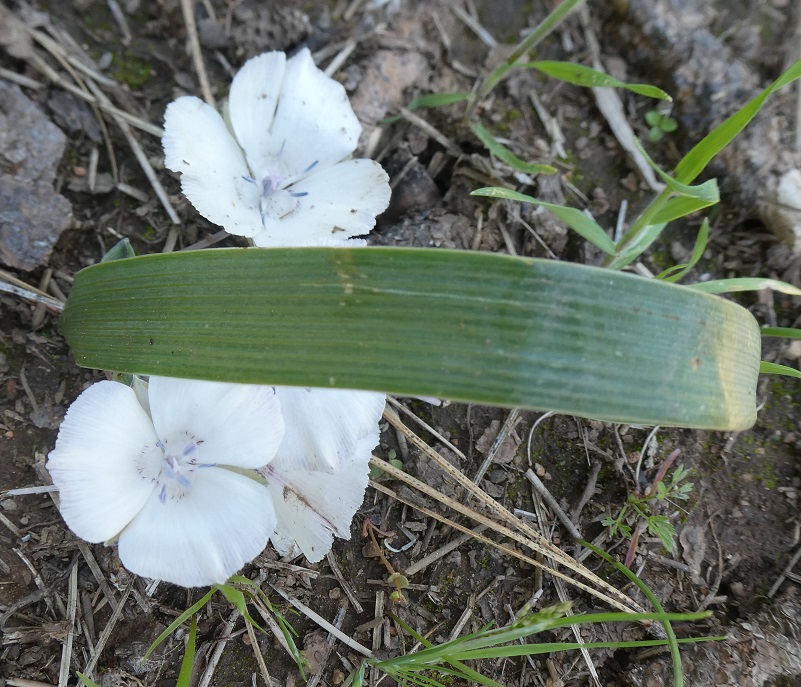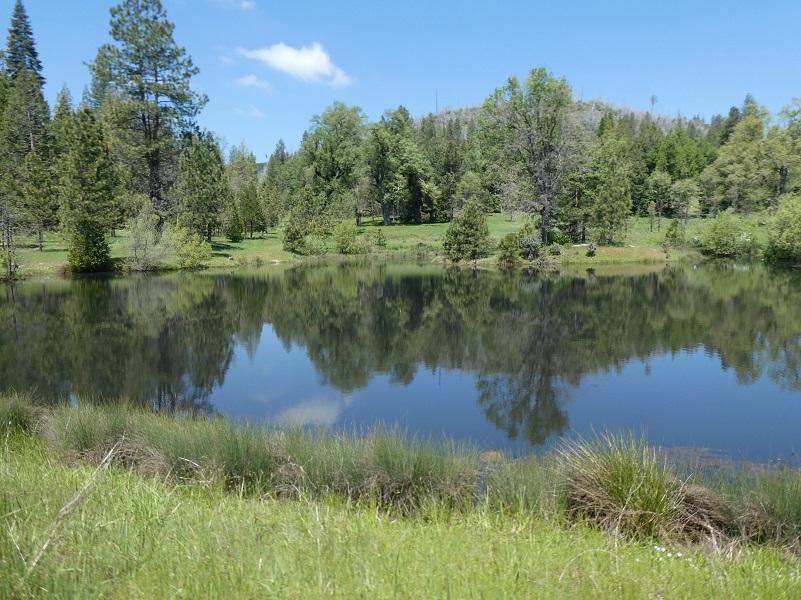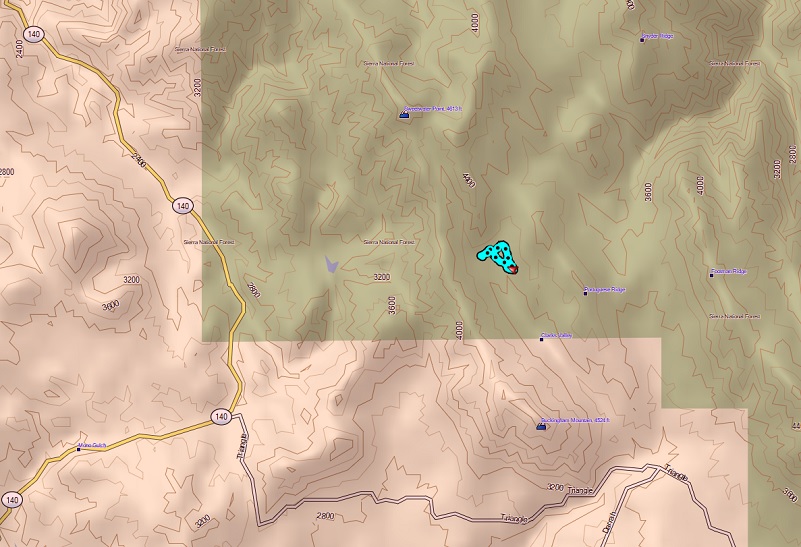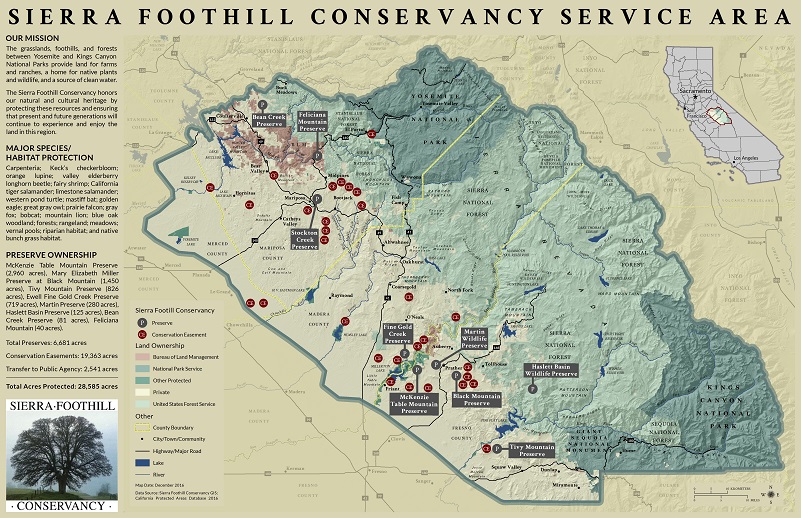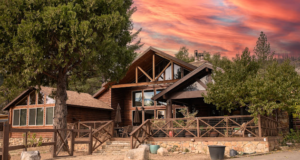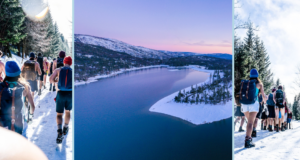I had never gone birding. I don’t know why. I just never did it. I had never been to Clark’s Valley, not far from Jerseydale, but I had seen it on a map. The Sierra Foothill Conservancy was offering a class with both of these new adventures and I headed out on their Docent-led hike to learn something new. I was not prepared for how beautiful this area was and how many different types of birds are all around us if we just take the time to listen.
Where: Sierra Foothill Conservancy, Clark’s Valley Conservation Easement
Distance: About 2 miles
Difficulty: Easy
Elevation Range: 3,642′ – 3,715′
Date: May 11, 2019
Maps: Buckingham Mountain Topographic Quad
Dog Hike? No, dogs not allowed on Sierra Foothill Conservancy Clark’s Valley Conservation Easement
Our group met up the Bootjack Store off of Darrah Road to caravan to the Clark’s Valley Conservation Easement. These preserves and easements are only available to be accessed through their scheduled hikes, classes and open preserve days. They are very special places with sensitive environments, some set aside for specific endangered species, while some are donated by landowners who want to see the land cared for and protected forever. A link to Sierra Foothill Conservancy’s website with their event calendar is at the end of this blog.
The Sierra Foothill Conservancy is the proud owner of eight nature preserves, totaling 6,681 acres. Conservation Easements total 19,363 acres. My hike today was on the 733 acre Clark’s Valley Conservation Easement, acquired in 2003, and owned by Al and Carliene Anderson. Oaks, firs, mountains, and a creek are on the property. Selective timber harvesting has occurred since the late 1940’s and ranching has occurred since the turn of the century. At least one homestead was built on the property. The property has been grazed in the past and grazing continues to be utilized as a management tool. The growing forest, open meadows and riparian area on the property provide significant natural habitat for native animal species. One example is that it serves as an important wintering habitat for Great Grey Owls.
Our docents on this adventure were Len McKenzie and Nan Oswald. They brought a ton of birding experience on this easy exploratory hike.
We made a stop to check out birds along our way to the Clark’s Valley property. Once we arrived at our intended destination, I was blown away with how beautiful this property was. Our timing for our visit was at the perfect time of the year with lush green grass, wildflowers and plenty of birds singing their hearts out.
As we were getting started, our docents and fellow birders shared a couple of apps that they use to help identify bird songs but also cautioned to use care when accessing them because it can upset the birds, especially during mating season. Those apps which have downloadable bird information were:
Audubon Bird Guide: North America Free on Android and iPhone, audubon.org
Merlin Bird ID: Free on Android and iPhone merlin.allaboutbirds.org
Our docents and members of our group really knew their birds, identifying the bird by song and even where it was located. It took me forever to figure out where those birds were and it was not an easy thing to capture a clear picture of them. I owe thanks to one of our docents, Nan Oswald, for help in identifying them in my pictures.
The next pictures were a smidge clearer.
My favorite song of the day that I could identify with the help of the birders was the Black-headed Grosbeak. I never guessed that it was so beautiful and you can listen to it sing here.
Birds weren’t the only critters putting on a beautiful show for us. Painted Lady butterflies were busy working the vetch flowers.
I’m not sure about what type of butterfly the next one is. A friend suggested that it might be a Blue Copper (Lycaena heteronea). Can someone help me identify it?
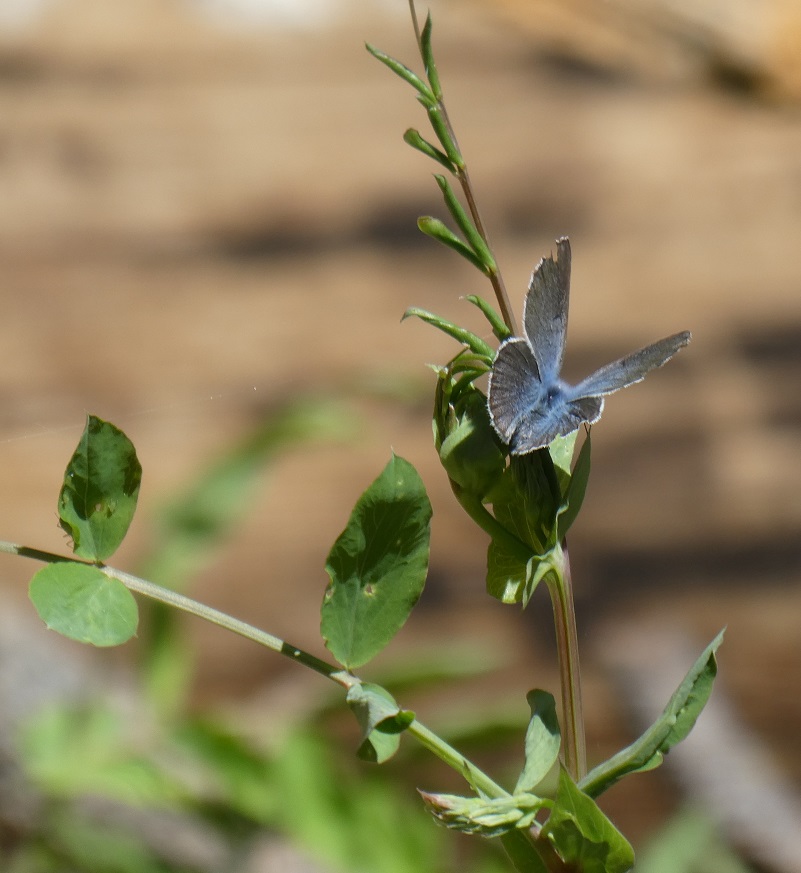 Ladybugs and flies were also mighty busy.
Ladybugs and flies were also mighty busy.
Oh, and those beautiful wildflowers!
We swung by the pond where we had spotted a couple of Mallard ducks and a Canadian Goose when we first arrived but they were nowhere to be seen.
But I did spot dragonflies.
I am listening to the birds much more than I did before this adventure. I don’t have the skills to identify many of them but am much more aware of the diversity surrounding me and am looking up, down and all around me for them as I wander. Thank you Len, Nan and the Sierra Foothill Conservancy so much for a really fun adventure and I loved learning new things about this area. We counted 34 birds that were identified on our adventure and Nan lent me the list of them.
Nashville Warbler
Ash-throated Flycatcher
Black-headed Grosbeak
Western Bluebird
Western Tanager
Chipping Sparrow
Cassin’s Vireo
Red-tailed Hawk
Red-breasted Sapsucker
Northern Pygmy Owl
Mountain Quail
California Quail
Pacific Wren
House Wren
Steller’s Jay
Western Wood Pewee
Northern Flicker
Hairy Woodpecker
Brewer’s Blackbird
Red-winged Blackbird
Dark-eyed Junco
Song Sparrow
Pacific-sloped Flycatcher
Common Raven
Great Blue Heron
Warbling Vireo
Eurasian Collard Dove
Mourning Dove
Bullock’s Oriole
Black Phoebe
Turkey Vulture
Canada Goose
Mallard
Hummingbird
Brown Creeper
If you are interested in going on one of these guided hikes on the Sierra Conservancy land or easement, there are many choices on their website linked at the end of this blog. You can sign up online and if you are a member, there is no cost. Don’t worry if you are not a member though because the cost is minimal, $10 for this hike. The funds go to a wonderful cause, protecting our foothill lands. They also have some Open Preserve Days which there is no charge to attend.
These preserves are only available to be accessed through their scheduled hikes, classes and open preserve days. They are very special places with sensitive environments, some set aside for specific endangered species, while some are donated by landowners who want to see the land cared for and protected forever. The hikes and classes are led by a very dedicated group of volunteers who are passionate about sharing the wonder of nature with visiting hikers. As they lead groups on the various properties, they share aspects of cultural history, habitat features, and facts associated with the specific property visited. Each of these dedicated hiking docents have varying backgrounds, lending expertise in a variety of areas.
Dog Hike? No
Sierra Foothill Conservancy Dog Policy: In order to protect endangered species and sensitive habitat, only service dogs are allowed on the preserves, with the exception of the Stockton Creek Preserve in Mariposa where dogs are welcome at any time.
Doarama:
What is a Doarama? It is a video playback of the GPS track overlaid on a 3 dimensional interactive map. If you “grab” the map, you can tilt it or spin it and look at it from different viewing angles. With the rabbit and turtle buttons, you can also speed it up, slow it down or pause it.
Maps:
Sources:
Sierra Foothill Conservancy Preserves
Prior Blogs in the Area:
Hiking With The Sierra Foothill Conservancy On The Bohna Preserve May 5, 2019
Hiking In The Rain To Table Mountain At The McKenzie Preserve March 23, 2019
Learning About Range Management on the McKenzie Preserve March 20, 2019
Hiking from McKenzie Preserve to Sky Harbor January 22, 2018

